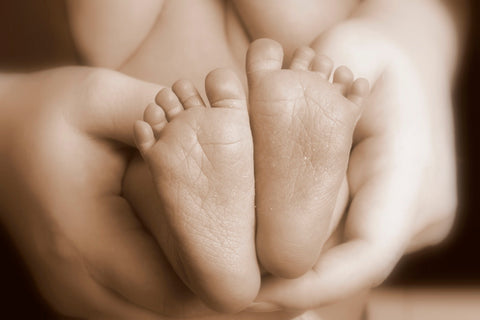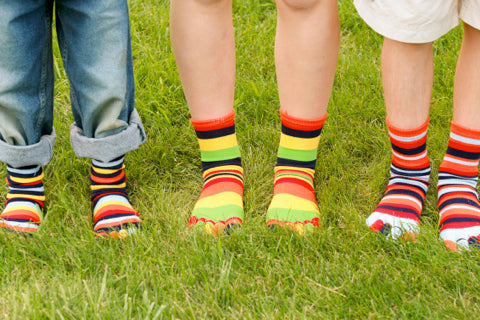
Definition
Sever’s Disease: Inflammation of the heel’s growth plate in children.
General Info
Sever’s disease, also known as calcaneal apophysitis, is a common heel problem affecting children. This heel bone disorder is often painful, though it’s usually temporary and causes no long-term health effects. With Sever’s disease, the Achilles tendon repeatedly pulls on the heel’s growth plate, causing microtrauma (i.e. microfractures), inflammation, and swelling in the affected area. Sever’s disease is similar to Osgood-Schlatter disease, which affects the knee. Inappropriate footwear may be a contributing factor in the onset of Sever’s disease.
Sever’s disease is particularly prevalent among active children between ages 8 and 15. Young boys and girls who play soccer and other sports in which footwear is inappropriate—i.e. too narrow in the toe box, too rigid, etc.—are most commonly affected. Sever’s disease usually appears during the adolescent growth spurt—the 2-year period in early puberty when children grow the quickest. The adolescent growth spurt occurs between the ages of 8 and 13 in girls and 10 and 15 in boys. Teenagers over 15 years old rarely experience this heel problem, as heel bone growth is usually complete by this age. Sever’s disease usually self-resolves within 6 months of onset, though it can last longer.
Signs & Symptoms
Some of the most common signs and symptoms associated with Sever’s disease include:
- Limping
- Tight calf muscles
- Heel swelling or redness
- Decreased ankle range of motion
- Heel pain that is worse during or following activity
- Pain or discomfort upon waking, or when the heel is squeezed
- Heel pain or tenderness in one or both heels, usually at the back of the heel
Possible Causes
The heel bone sometimes grows faster than the leg muscles (including the calf muscles) and tendons (including the Achilles tendon) during the early puberty growth spurt. The different growth rate in these structures can cause lower leg muscles and tendons to become overstretched and tight, which makes the heel less flexible and puts excessive pressure on the heel growth plate. The Achilles tendon, the strongest tendon in the body, attaches to the heel growth plate, and repetitive stress on this tendon, especially if it’s already tight, can damage the growth plate, leading to tenderness, swelling, and pain.
Activities that involve running or jumping, such as soccer, gymnastics, track, and basketball, can place significant stress on a tight Achilles tendon and contribute to the onset of Sever’s disease. Ill-fitting shoes can also contribute to this health problem by failing to provide the right kind of support or by rubbing against the back of the heel. The following factors may increase the likelihood of Sever’s disease in kids or young teens:
- Leg length inequality
- Excessive foot and ankle pronation
- Obesity or carrying excess bodyweight
- Wearing footwear that is too narrow in the toe box
Helpful Strategies
Sever’s disease will go away on its own with rest or after heel bone growth is complete, usually within 2 to 8 weeks after the heel pain or discomfort appears. Sever’s disease usually does not cause long-term problems, though symptoms may linger for up to several years in severe cases. Certain conservative care measures may be helpful in treating this health problem, including:
- Using cold therapy
- Undergoing physical therapy
- Elevating the leg while at rest
- Using an elastic wrap or compression stocking
- Avoiding activities that provoke pain or discomfort
- Performing hamstring and calf muscle stretches two to three times per day
- Avoiding footwear with heel elevation, toe spring, and toe taper, and instead favoring footwear that’s completely flat and widest at the ends of the toes
More aggressive treatment measures, including over-the-counter anti-inflammatory medication (e.g. ibuprofen), steroid injections, and surgery, may be indicated in certain cases.
Addressing the footwear component of this health problem is an important part of a well-rounded Sever’s disease treatment plan. Optimal footwear for preventing or treating this problem is flat, wide (widest at the ends of the toes), and flexible in the sole. Open-back footwear may be particularly helpful for kids and teens with Sever’s disease.

WANT TO IMPROVE YOUR FOOT HEALTH?
Let the team at Natural Footgear help you! Subscribe to our newsletter for the latest offers and helpful info, and sign up for our FREE email courses on various topics and foot health conditions.
Sign Up →
Want to Improve Your Foot Health?
We are here to help you every step of the way. Get our newsletter for the latest offers and helpful info, and sign up for our FREE email courses on various topics and conditions, including bunions, hammertoes, neuromas, plantar fasciosis, shin splints, ingrown toenails, and more.
Sign Up →
 “What shoes are best for my child?” As a physician with a specialty in the natural treatment of foot problems, this is a question I often hear. It’s a question posed by concerned parents who, themselves, are afflicted with foot ailments such as bunions, hammertoes, fungal toenails, and plantar fasciosis. Kids, as you well know, spend a lot of time on their feet, walking, running, and playing. In fact, an...
Read more
“What shoes are best for my child?” As a physician with a specialty in the natural treatment of foot problems, this is a question I often hear. It’s a question posed by concerned parents who, themselves, are afflicted with foot ailments such as bunions, hammertoes, fungal toenails, and plantar fasciosis. Kids, as you well know, spend a lot of time on their feet, walking, running, and playing. In fact, an...
Read more





